Urban rail adventures
Urban rail includes rail-based public transportation in urban areas, including rapid transit (also known as underground, subway, or metro), light rail (streetcars), and more exotic systems, such as funiculars, monorails and cable cars.
- See Public transportation for practical information about urban rail transport.
Understand
Many cities around the world have well developed, efficient and effective public transport systems. However in achieving that aim they also tend to be rather boring, with clean platforms, modern trains and with little to interest on your journey going from A to B.
The list of systems below have been selected because they are an experience in themselves, regardless of where they take you. Entering the stations you may be treated to unusual architecture or sumptuous artwork. Perhaps the journey is in itself a way to experience the sight and sounds of the city as a resident does.
Living metro systems
The systems below are part of the living fabric of their cities, taking commuters from A to B, but also providing a fascinating insight into how life is lived.
San Francisco Cable Cars
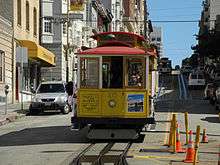
The 🌍 San Francisco cable car system is one of the few survivors of the decline of street cars in the United States the 1950s. It is one of the best ways to see the city up and down the many hills. While it is expensive and geared mostly towards tourists, it continues to be used by locals, most of whom purchase season passes, for their daily commute.
Medellín Metrocable
🌍 Medellín was the first among a number of Latin American cities to introduce cable cars or aerial trams—not as a fun ride for tourists, but as an everyday transport for local commuters—in the 21st century. This system of so far five lines (a sixth is set to begin operation in 2020) and a total length of 11.3 km adapts to the mountainous landscape, overcoming a difference in altitude of up to a thousand metres. It links the mostly poor barrios (i.e. suburbs and informal settlements) on the surrounding mountains with the economic centre down in the valley that is served by the Metro proper (elevated rapid transit). Thus, it has drastically reduced the commuting times of many working-class neighbourhoods.
But beyond a means of transport, the Metrocable is also a symbol of the radical transformation of this city from a proverbially dangerous, crime-ridden place globally known for its drug cartels to a prosperous city that provides modern services to its citizens. Studies have shown a significant drop in crime rates in the neighbourhoods accessed by the Metrocable. For visitors, it is an oportunity to get to know the less well-off (but mostly pacified) districts off the beaten track while enjoying the view of the cityscape or the lush green mountain forest of Parque Arví.
La Paz–El Alto cable cars

Similar to Medellín and unlike the San Francisco cable cars, Mi Teleférico, the urban transit system in 🌍 La Paz and neighboring El Alto, is based on gondolas that hang from cables over the city. Unlike most aerial cable car systems, which are intended for tourists at places like ski resorts, Mi Teleférico is mainly used by local residents. This unusual transit system is practical because of the canyon in which La Paz is located, with a substantial elevation difference between it and El Alto, making buses slow and prone to traffic jams. In addition to the novelty of riding gondolas that are used as genuine public transport, the system gives you fantastic views of the city down below. There are several lines, but the red line from central La Paz to El Alto is the only one of interest to most visitors: It takes you to a station with great views and, on Thursdays and Sundays, the fascinating (though not entirely safe) El Alto market.
Glasgow Subway
🌍 Glasgow's Subway is a deep-level system, but on a smaller scale earning it the nickname "The Toy Train", which was modernised in the mid 1980s, having acquired something of a reputation previously. Renewed modernisation is under current consideration by the Scottish authorities. The Riverside Museum, which is a 7 min walk from Partick subway station, has some exhibits relating to the previous incarnation of the 'Subway'.
London Underground and Overground
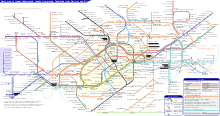
The 🌍 London Underground is the oldest system of its kind in the world. The world's first underground railway, the Metropolitan Railway, opened between Farringdon and Paddington in 1863, and more surface and sub-surface sections were opened throughout the 19th century. These pioneering railways now constitute the Circle, District, Hammersmith & City and Metropolitan lines, with the very oldest section being the Circle and Hammersmith & City lines between Paddington and Farringdon. The deeper "tube" lines, which gave the Underground its famous nickname, opened in the first decades of the 20th century. Many of the stations are considered architecturally significant, especially those of Leslie Green and Charles Holden, and the house design style for the London Underground is now internationally recognised. The system is undergoing extensive modernisation, which when completed will further its reputation. From mid-2019 the Underground will be joined by the Elizabeth line, which will be comparable to the RER system in Paris. The construction sites for this major project are visible in many key locations of Central London.
The Overground crosses under the Thames, utilising what is regarded by many as the first major underwater tunnel in the world. Although you can't visit the tunnel itself, you may be able to see portions of its architecture from the stations on either side at Wapping and Rotherhithe, and you can of course still ride through it!
Also, off the beaten track in the neighbourhood of Tower Hill is an obscure small domed construction close to the river. Although not the original entrance, this was once the entrance to a tunnel used by London's first tube, the Tower Subway, which ran under the Thames.
You can learn about the Tube and the Overground, as well as the rest of London's transport, at the London Transport Museum in Covent Garden.
Wuppertal Schwebebahn
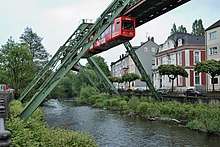
The 🌍 Wuppertal Schwebebahn (or "floating tram") in Germany is rather striking in its uniqueness. The cars hang under an elevated rail that take you around the town. Designed in the 19th century and intended for large metropoles such as Berlin, the concept never extended beyond this first example. Nevertheless it has been running (with some pauses) since its opening in 1901, and a fantastic way to get a birds eye view of city life running below you.
Dresdner Bergbahnen
Not really a "system" as such but rather two lines built to connect the "higher ups" (literally and figuratively) on two hills to the way to the city center of 🌍 Dresden, the Dresdner Bergbahnen (literally "mountain railways"—one funicular dating from 1895, and one Wuppertal-style suspension railway opened in 1901) still serve residents and visitors alike as if it were day one. Both the technology itself and the view from the hill are well worth the money you spend on the fare. Due to the age of the system it usually shuts down for a few days twice a year; check out the (German language) website for details. The upper station of the suspension railway includes a small museum (free admission) on the history of this style of transport and the close relationship between the Wuppertal and the Dresden lines.
Naumburg tram
With a single line (deceptively numbered "4"), a length of just 2.9 km and merely seven cars used in everyday service (in addition to seven "nostalgia" cars only fetched from the depot on special occasions), 🌍 Naumburg has Germany's tiniest tram system. Nevertheless, it runs day by day, at half-hourly intervals and serves local commuters and tourists alike. The annual ridership numbers have increased significantly in recent years and the network was extended by 440 metres (!) in 2017. The cars used in normal operation date from 1959 to 1973, while a 1928 model is kept for special trips. Colloquially, Naumburgers call their tram Wilde Zicke, literally translating to "wild goat", but more freely meaning "wild bitch".
Stockholm Metro
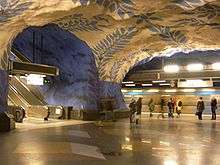
Known as 'the world's longest art gallery', the 🌍 Stockholm metro system has made over 90 of its 100 stations into veritable art galleries containing sculptures, mosaics, paintings and engravings by various artists.
Budapest földalatti
The M1 line of the 🌍 Budapest Metro, between Vörösmarty tér and Széchenyi fürdő (c. 3.7 km in length), is one of the oldest underground lines in Europe, being in operation since 1896. Földalatti is the literal Hungarian translation of English "underground". Originally, it was called "millennium underground", referring to the millennial jubilee of the Kingdom of Hungary celebrated in 1896. It was implemented by cut-and-cover method directly below the pavement rather than by drilling a tunnel. Thus the stations are very close to the surface and you typically walk down just a single flight of stairs. Stations still have their original fin-de-siècle design with wrought-iron pillars painted dark green, walls covered with white ceramic tiles, and decorative station name signs. The vehicles in use nowadays, however, are not from the 19th century, but were replaced in the 1970s (being kind of retro by now, as well). The cute jingle announcing the next stop adds further to the charm of this ride.
Moscow Metro
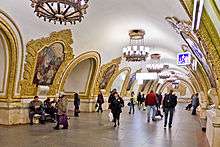
One of the world's largest networks in 🌍 Moscow also has some spectacular showcases of Soviet art in a select number of stations which will give you a first hand taste of the 20th century history of Russia. Many of the stations built in the 1960s and 70s were cheaply made and are not of particular interest, however a tour of a select few is a must. Ploshchad Revolutsii station has 76 bronze sculptures of socialist workers, all in the Socialist Realist theme of '‘art is no use unless it serves politics’. Mayakovskaya station is built in the art-deco style, and has many mosaics painted in its ceiling. The impressive artwork of Komsomolskaya station – a baroque ‘palace of the people’ is considered the prime example of Stalinist design. The murals of Kiyevskaya station celebrate Russian - Ukrainian unity. It is not all Soviet era, with Rimskaya station having been built after the collapse of the Soviet Union and grandly decorated with Italian art, and the recent Park Pobedy station being in the style of 'neo-stalinism' art.
To add some mystery to the system, Moscow is rumoured to have a second metro system which is deeper and more extensive than the main Metro system, exclusively for the use of top Kremlin officials to escape in the event of a war. Known as Metro-2, it is believed that Stalin built the system so that he could escape in the event that the US nuclear strike he feared would occur. While no official sources have confirmed its existence, it is believed that there are secret entrances to this network in some of the regular Metro stations. It is also believed that the system remains in use to this day by Vladimir Putin and other top Kremlin officials.
Alexandria Trams
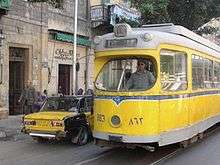
Opening in 1863, the 🌍 Alexandria tram network is Africa's oldest and one of the oldest in the world. The network is extensive and used by locals to get around. You can views all parts of the city very well (some trams are double decker) as well as all along the city's Mediterranean coast.
Kolkata tram
India's only tramline is also one of the world's oldest. The 🌍 Kolkata tram has been serving the city since 1873, and you will not be too distant from that time considering many of the cars running today are from 1939.
Hong Kong Island tram
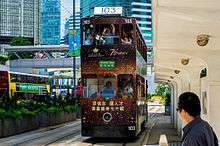
Affectionately known as 'ding dings', the best way to get a view of life on 🌍 Hong Kong island is to take a tram from central and head East. It will take you past the ultra modern shopping malls of Central and Admiralty, through the youth shopping district of Causeway Bay and finally through the markets and older housing in the east.
It costs HKD $2.3 for a ride on one of these old vehicles, that do not have air conditioning but rather windows and fans.
Note that this is the cheapest way around Hong Kong Island, and as such they are literally packed with domestic helpers from the Philippines and Indonesia during their day off on Sundays. During this day it is impossible to sit down, stand up straight and almost impossible to get off!
On a hot night it can be very pleasant to ride a tram with the window open watching life roll by.
Pyongyang Metro
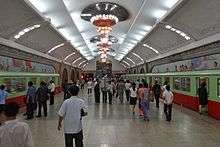
North Korea's only metro system in the capital 🌍 Pyongyang is at 110 meters one of the world's deepest.
Similar to related Soviet systems, it has a dual utility as a bomb shelter, with thick steel blast doors at every entrance. Gaping hallways with massive chandeliers will greet you, as well as a multitude of socialist realist arts depicted in murals such as "The Great Leader Kim Il Sung Among Workers".
Adding to the mystery of the system are secret lines available only to the upper echelons of the government. As the ride on the Pyongyang metro most visitors to this "hermit republic" get used to be only between the same two stations, there even was a bizarre rumor that the whole system does not really exist, however more recently other parts of the metro have been shown to tourists, demonstrating that they are, in fact, real.
Melbourne Trams
The 🌍 Melbourne tram system is the world's largest, but of real interest is its integration into the fabric of this slightly offbeat city. Tram lines run everywhere, and a whole day spent viewing the city through the comfort of the tram is possible. See the Trams in Melbourne article for more detail.
Historic metro systems
The metro systems below are run primarily for tourists and only have a limited length of track. They still provide a great way to view parts of the city, even if the rest of the population has little use for them.
Rio de Janeiro Trams

The 🌍 Rio de Janeiro Santa Teresa Tram (Brazilian Portuguese: Bonde de Santa Teresa) opened in 1877, was electrified in 1896 and had once been integral for moving people around the city. The 6km (4 mi) long, 1100mm narrow-gauge line closed in August 2011 after a derailment killed six and injured fifty. The system has partially reopened with new rolling stock; about 2km of track was operational at the end of 2015.
Tramvia de Sóller
The 4.6 km long heritage tram in 🌍 Sóller on the Spanish island of Mallorca connects the train station (allowing changeover from/to the capital Palma) with the harbour (Port de Sóller). The reception building is a converted 17th-century villa and thus the world's oldest station building. The tramway has been in operation since 1913 and runs on a 914-mm gauge. Five of the trolleys in use are still of the original 1913 stock, while others are decommissioned tramcars from Palma and Lisbon, dating from the 1950s. To request a stop, you pull a string, ringing a bell.
Hiroshima Trams
The 🌍 Hiroshima Electric Railway has recently reopened as part of the city's showcase of the atomic bomb attack at the end of World War II.